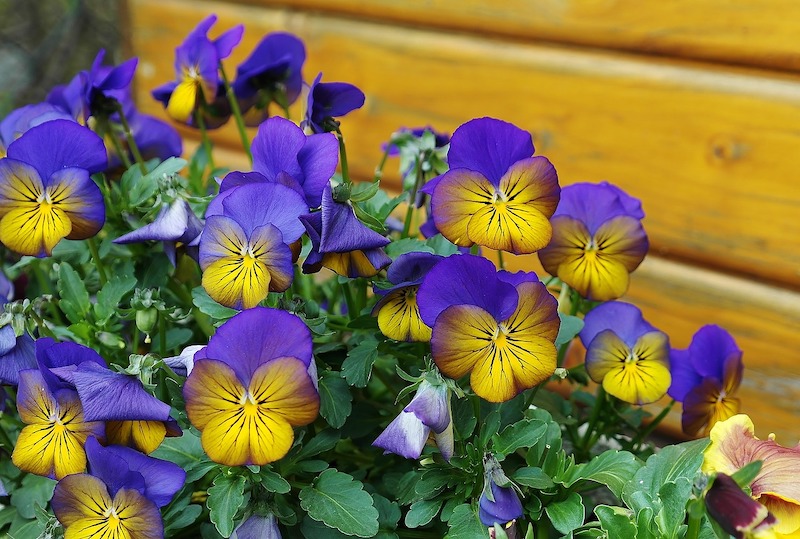The pansy flower is one of the most popular annual plants among gardeners. With the wide range of colors this beautiful flower could offer, who wouldn't want to have one planted in their garden? If you're interested in growing pansies, read on!
Pansy Flower: How To Successfully Grow One From Seeds
Growing pansy flower from seeds is pretty easy, especially once you get to know the secret to it. I've added pansies in my garden and seeing them in full bloom always make me feel excited about spring. Aside from the eye-catching colors and fragrance the pansy flower brings, another amazing thing is you could actually eat it. Pansies are one of the many edible flowers you can incorporate in some of your recipes. They have this wintergreen taste perfect for your salads or desserts. So, what are you waiting for? Let's get down to business and learn how to grow pansies from seeds!
Step One: Fill A Seed Tray With Compost
Fill your seed tray with moist compost and distribute it evenly. While the compost needs to be moist, it should not be soaking wet as it will reduce oxygen that the pansy flower seeds need for germination. Or worse, stop them from germinating. On the other hand, if the compost is too dry, this will cause problems too. You can moisten the compost by sprinkling warm tap water.
Step Two: Sow The Seeds
When your seed tray and compost is ready, it's now time to sow the pansy flower seeds! Pansies are best sown during late winter or early spring for summer bloom or during late summer for spring bloom. The seeds are very tiny so you need to handle them with care. Sow the seeds on the surface then you're ready for the next step.
Step Three: Cover With Vermiculite
Pansy flower seeds like darkness for the germination process so it's best to cover them after sowing. Top it off with vermiculite, about 1.5 mm, which will help in absorbing excess moisture. This natural mineral also allows oxygen to pass through your compost and into the germinating seeds.
Step Four: Enclose Tray In A Plastic Bag
Enclose your seed tray in a clear plastic bag and seal it using a rubber band. This will help retain moisture in your compost. If you're using a seed tray with a plastic dome cover, that would do as well. Now, place the tray in a cool, dark place and let the seeds germinate.
Be mindful of the soil temperature since high temperatures could lead to failed germination. The temperature should be 24 C for a successful germination. Normally, it will take 10 to 14 days to germinate.
Step Five: Transplant Into Pots
In about 3 to 6 weeks, the seedlings are no longer too fragile to handle. Choose the healthiest ones to transplant into pots. Carefully avoiding the stem and only touching the leaves, transplant the seedlings gently into 3-inch pots. Place the pot in a cool and well-lit area, but not in direct sunlight.
Once the seedlings rooted well into their pots, pinch out growing tips of the plant. This will make your pansies well-branched. After some time, you can now transplant your pansies into 6-inch pots and continue growing them there for a few more weeks in a greenhouse.
Step Six: Acclimatize Pansies
Gradually, acclimatize your pansies to the outside world. Place them in a sheltered area during daytime then bring them back inside when night comes. Once your pansy flower is fully acclimatized, it can now be left outside or you can transplant them in a flower bed for their final flowering position.
Some Tips In Growing Pansies
- Water your pansies on a regular basis. One of the common reasons there's unsuccessful growth of pansies is they do not receive enough water.
- Try using an all-purpose fertilizer around your flower bed of pansies. This will help your pansies grow beautifully.
- Whenever you see any dead or faded flower, you need to remove it. In this way, blooming will be prolonged and more flowers will more likely grow.
- During hot months, mulching is recommended to keep the moisture in. On the other hand, during the cold months, you can put straw mulch to protect your pansies from the cold weather.
Want to keep your pansy flower looking full all season long? Watch this video:
If you want to have a happy-faced pansy flower in your garden, I hope this step-by-step guide could help. Growing pansies from seeds can be easy, you just have to be patient. Looking at these beautiful flowers blooming in your garden is surely relaxing!
Do you have pansies in your flower garden? How about some tips on how to grow a pansy flower? I would love to know your thoughts so send your comments below!
Are you planning on having a rose garden? This basic guide to growing rose gardens successfully could help you out!
For more gardening tips and tricks, follow Garden Season on Facebook, Twitter, Instagram, and Pinterest!



